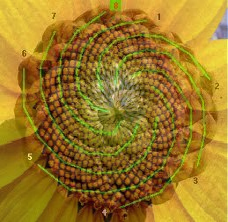Fibonacci numbers
Fibonacci numbers have been entertaining puzzle hobbyists for more than 800 years. The following sequence shows how they begin:
1 1 2 3 5 8 13 21 34 55 89 ...
Note that every number is the sum of the two previous numbers.
About 50 years ago, I made a surprising discovery about these numbers. I submitted it to Martin Gardner and he recommended I send it to Dr. Verner Hoggatt, Founder of the Fibonacci Association. I did so and Dr. Hoggatt said that indeed it was original! He liked it and sent back a proof. The discovery:
For every (non-trivial) Fibonacci number that is prime, its sequence number is also prime.
For example: since fibnum 23 (28657) is prime, 23 is prime.
Note that this is one of only a few known theorems about prime numbers.
Another interesting observation I made while composing this website:
"For each and every fibnum sequence-number that is composite, its fibnum in the sequence is divisible by every fibnum of each component of that composite."
For example: since 28 is divisible by both 4 and 7, fibnum 28 (317811) is divisible by both fibnum 4 (3) and fibnum 7 (13).
Here are two websites for an introduction to these fun numbers:
- http://www.mensaforkids.org/lessons/fibonacci/mfklessons-fibonacci-1.pdf
-
http://hudsonvalleygeologist.blogspot.com/2010/09/introduction-to-fibonacci-numbers.html
| Solving | Cancer | Method | Space | Fibonacci | Checkers | Map | |
|---|---|---|---|---|---|---|---|

| 
| 
| 
| 
| 
|
||